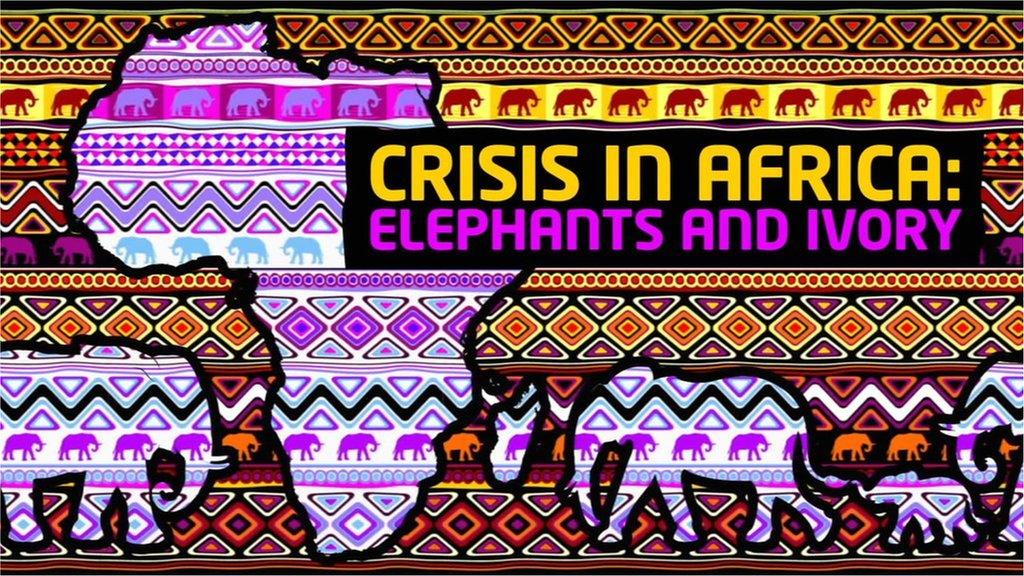What are some of the world's most endangered species?
- Published
- comments
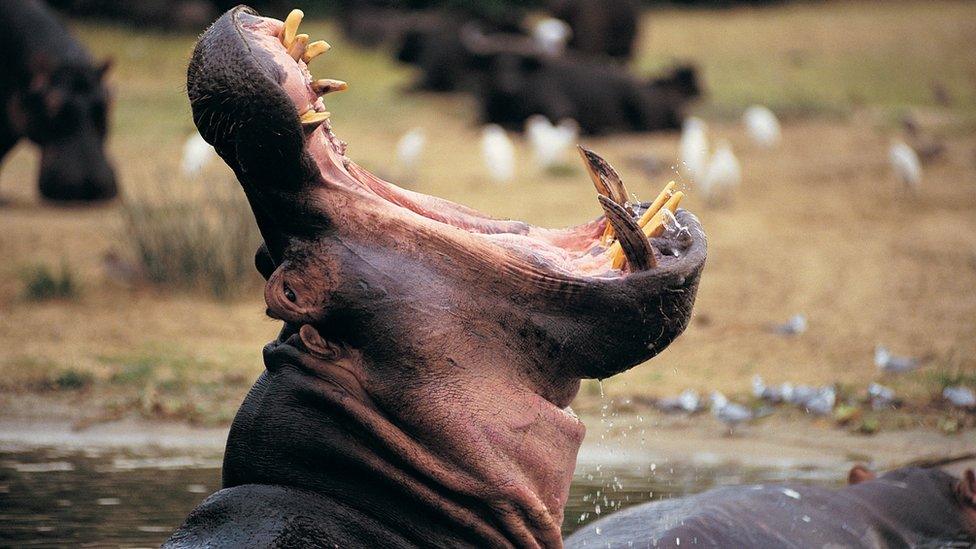
Parts of hippos bodies are traded both legally and illegally including their teeth and tusks
A number of African nations are calling for hippos to be added to the list of the world's most endangered species.
The mammals, which live in sub-Saharan Africa, have been classed as vulnerable on the IUCN Red List of Threatened Species since 2006.
In 2016, the IUCN estimated the hippo population was approximately 115,000-130,000.
Hippo numbers have seen a drop over the last few decades for various reasons including loss of habitat, droughts and poaching.
Different parts of the hippo are traded both legally and illegally, including their teeth, tusks, meat and skin.
Several African countries including Benin, Burkina Faso, Central African Republic and Senegal want the animals to be given the greatest protection under what's known as the Convention on International Trade in Endangered Species of Wild Fauna and Flora (CITES).
Hippos can be found in 38 different countries in Africa including Angola, Botswana, Democratic Republic of Congo, Malawi, Uganda and Zimbabwe.
A recent proposal to give the increased protection to the animal said: "Legal international trade in hippo parts and products is having a detrimental impact on hippos by providing an avenue to market illegally acquired specimens from poached hippos into trade."
Greater protection of the mammals would prevent hippo parts being traded internationally, helping to improve the species' numbers.
Critically Endangered (CR): A species facing an extremely high risk of extinction in the wild.
Endangered (EN): A species considered to be facing a very high risk of extinction in the wild.
Vulnerable (VU): A species considered to be facing a high risk of extinction in the wild.
What are some the world's most endangered species?
Saola
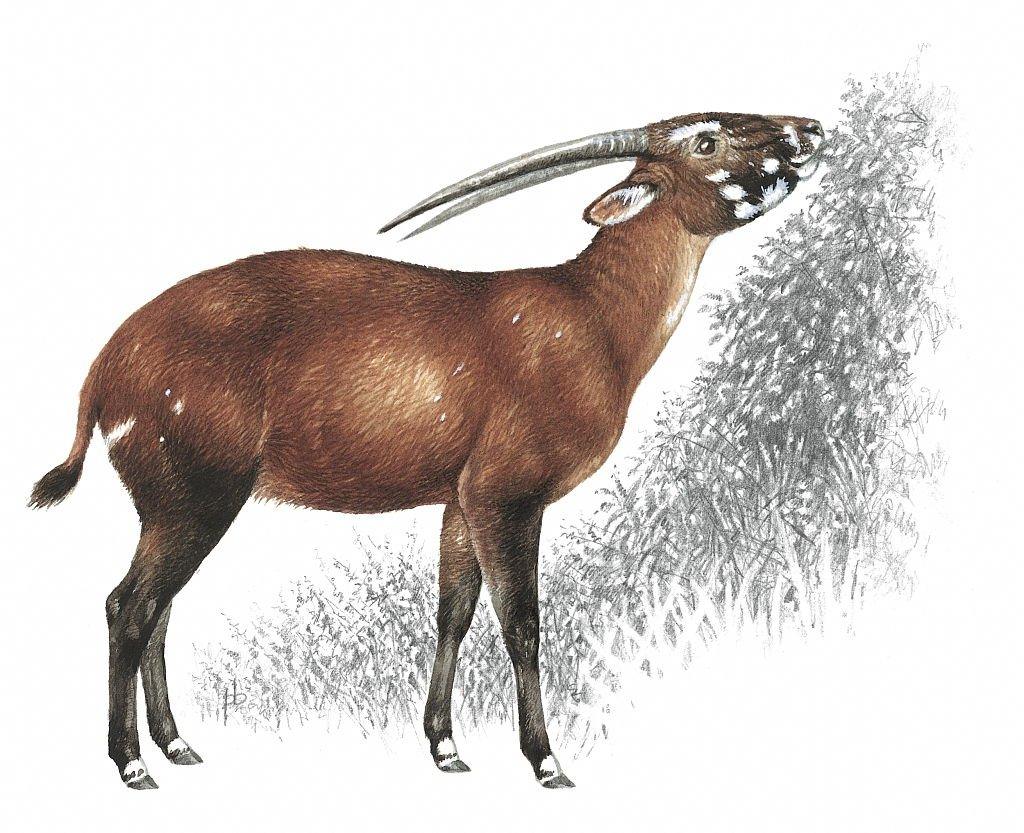
The saola was only discovered 20 years ago
Hippos aren't the only animals which have seen a significant fall in their numbers over the years.
The saola was only discovered 20 years ago in 1992, but it's currently considered to be one of the most endangered species in the world.
The mammal, which has been described as the Asian unicorn, resembles an antelope. It's known for its long horns and the white markings on its face and can be found in the mountains of Vietnam and Laos.
It's not known exactly how many saola exist, but the IUCN estimates the total population to be at around 750, and some believe this number could be a lot less.
Orangutan
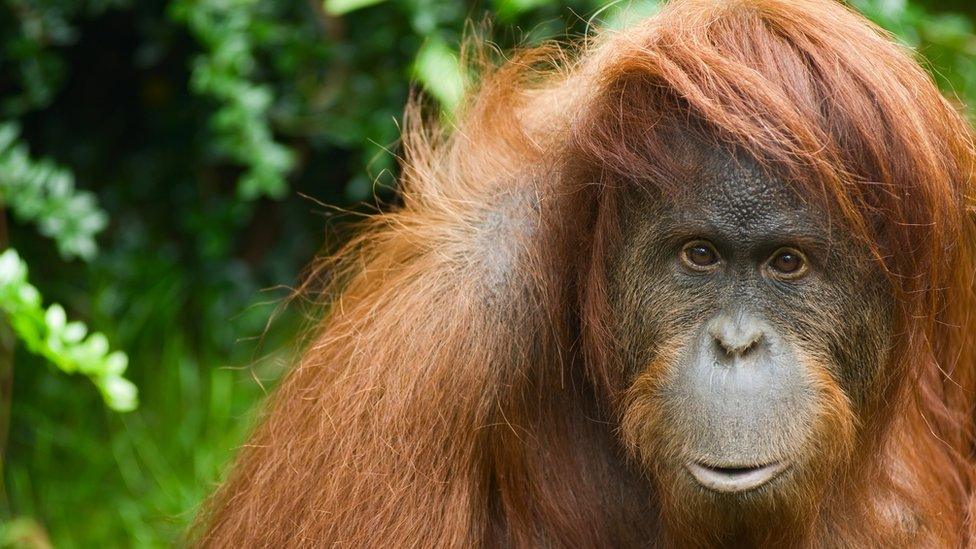
There are thought to be less than 8,000 Sumatran orangutans alive today
Sumatran orangutans are another species which have seen a drastic fall in numbers over the years.
Known for their reddish fur and long limbs, the animals are classed as critically endangered, by the IUCN with less than 14,000 individuals in the wild.
Today the majority of these orangutans are found in the northernmost tip of Sumatra in lowland rainforests and swamps.
Rhinos
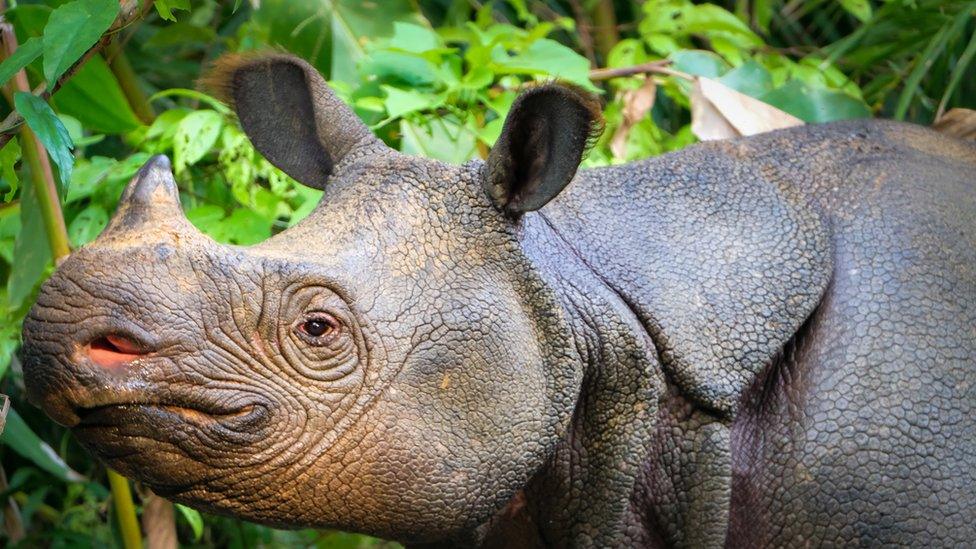
Once found throughout south-east Asia, Javan rhinos have suffered a staggering decline in their numbers due to hunting and loss of their natural habitat.
The World Wildlife Fund (WWF) has said there are only about 75 left in the wild, making the Javan rhinos - which can only be found on the island of Java, Indonesia - one of the rarest of the rhino species.
When it comes to other species of rhino, black rhinos are also listed as critically endangered by the IUCN, with around 5,630 individuals in the wild - but this is much more than in the past when there was just 2% of the population left.
The western black rhino was declared extinct in 2011, but with the help of rhino conservation efforts numbers of other black rhinos have more than doubled across Africa since the 1990s.
Today, 95% of black rhinos are found in just four countries: Kenya, Namibia, South Africa and Zimbabwe.
African Forest Elephant
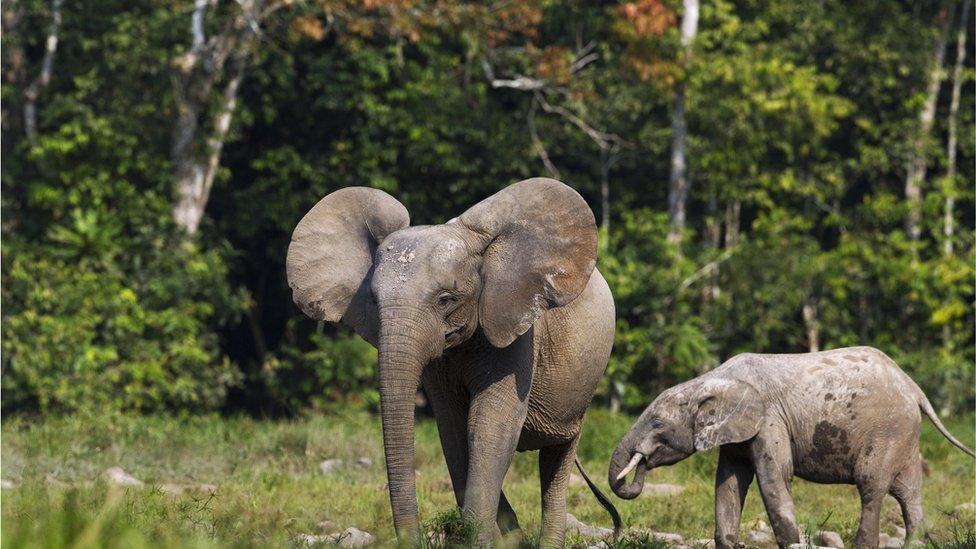
The forest elephant is one of the two members of the African elephant species, who live in of West and Central Africa.
The actual number of wild African forest elephants remains uncertain as they are naturally shy animals, but their numbers have declined by an estimated 86% over 31 years due to poaching. Habitat loss and land-use change for agriculture and other land uses has also led to conflict between the elephants and humans.
Which animals are seeing an increase in numbers?
Gorillas
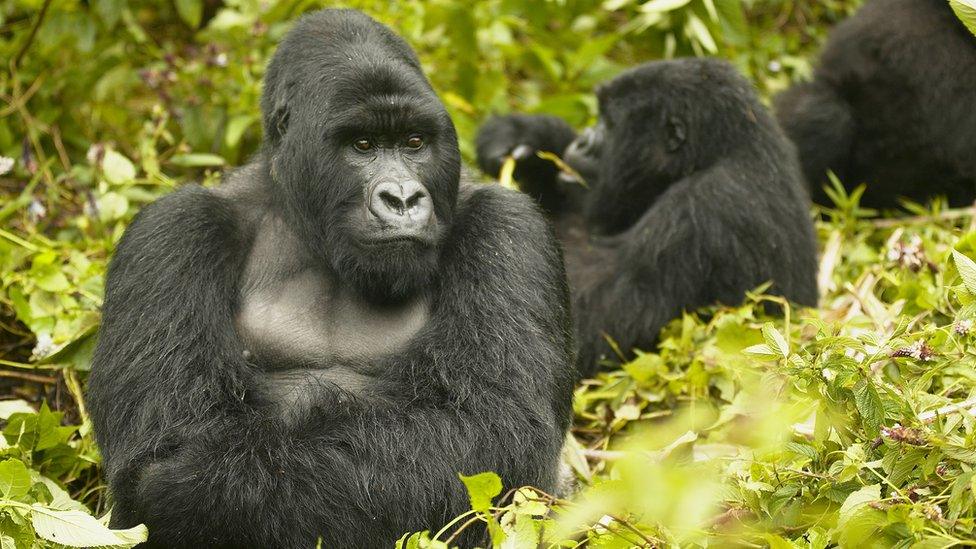
Gorilla numbers are now believed to be over 1,000
Although lots of animals are seeing their numbers decline, it's not all bad news. Some species have seen their population stabilise due to conservation efforts, including the mountain gorilla.
According to the IUCN, the population of mountain gorilla numbers is now estimated to be over 1,000 as of 2018, up from around 680 gorillas in 2008.
The species has now been moved from the critically endangered to the endangered category, although conservation efforts need to continue to ensure the gorillas don't see a future drop in numbers.
Tigers
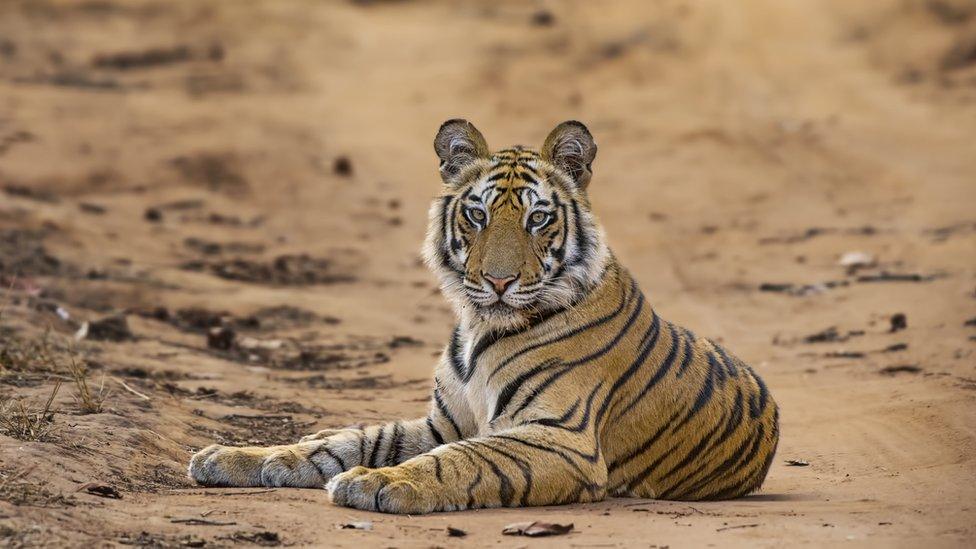
Tiger numbers have seen a significant increase according to the IUCN
The world's tiger population has also seen as increase, according to the IUCN's latest figures.
Tiger numbers saw a long period of decline, and the animals which are currently classed as endangered, still face various threats. However, there are now believed to be 4,500 tigers as of 2022, which is a huge increase from the estimated 3,200 tigers in 2015.
- Published17 July 2021
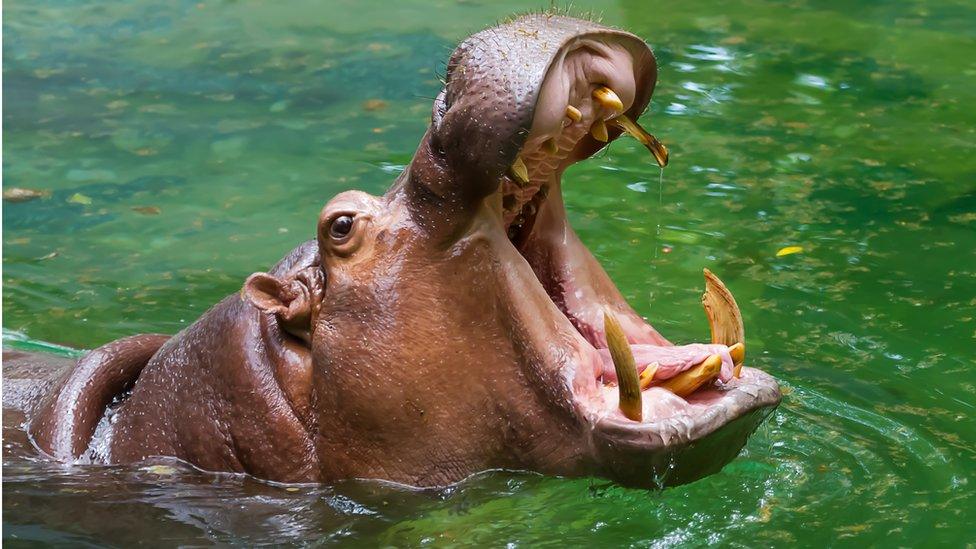
- Published12 May 2016
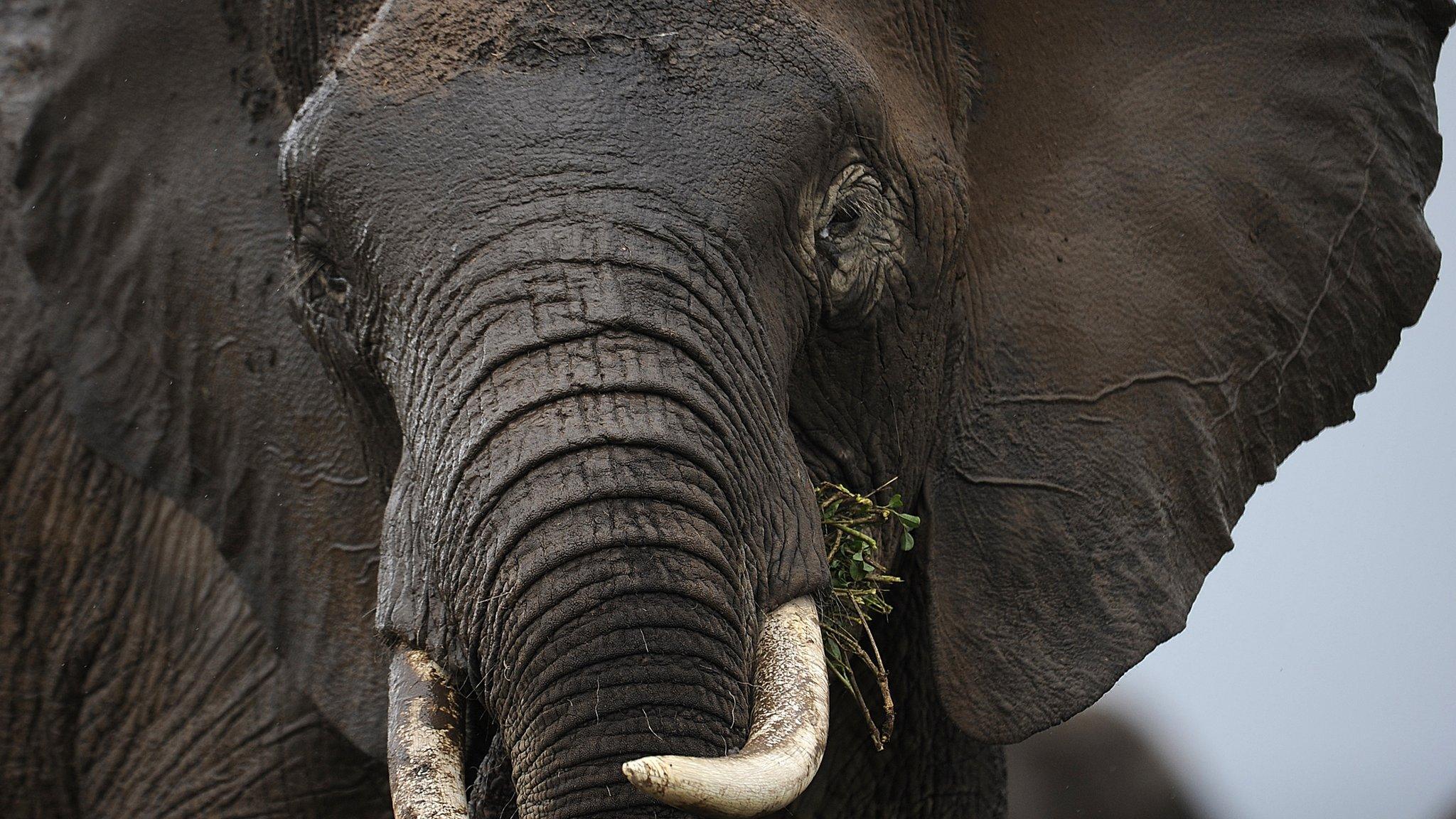
- Published5 October 2016
